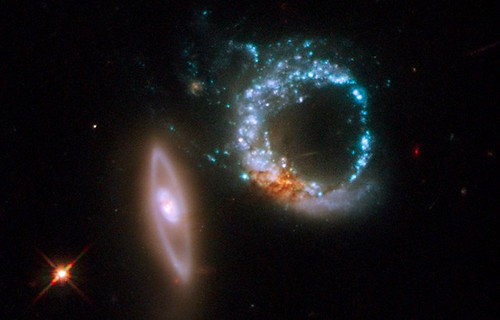
HD 80606b is a very special planet.
Scientists are now referring to HD 80606b as "everyone's second favorite planet" (after the Earth of course).
HD 80606b has "the most eccentric orbit of any known exoplanet."
Bloomberg: NASA Telescope Spots Weather Changes Outside This Solar System.
Laughlin, 41, a professor at University of California, Santa Cruz, said the gaseous planet has an unusual orbit that brings it closer to its star than Mercury is to the sun, and it then shoots out to a distance almost as far away as Earth is from its sun.Translation: gravity is a myth.
“The orbit is extremely eccentric,” Laughlin said. “Of the exoplanets that have been detected -- we’ve observed 300 -- this is the most extreme orbit we’ve seen so far.”

















